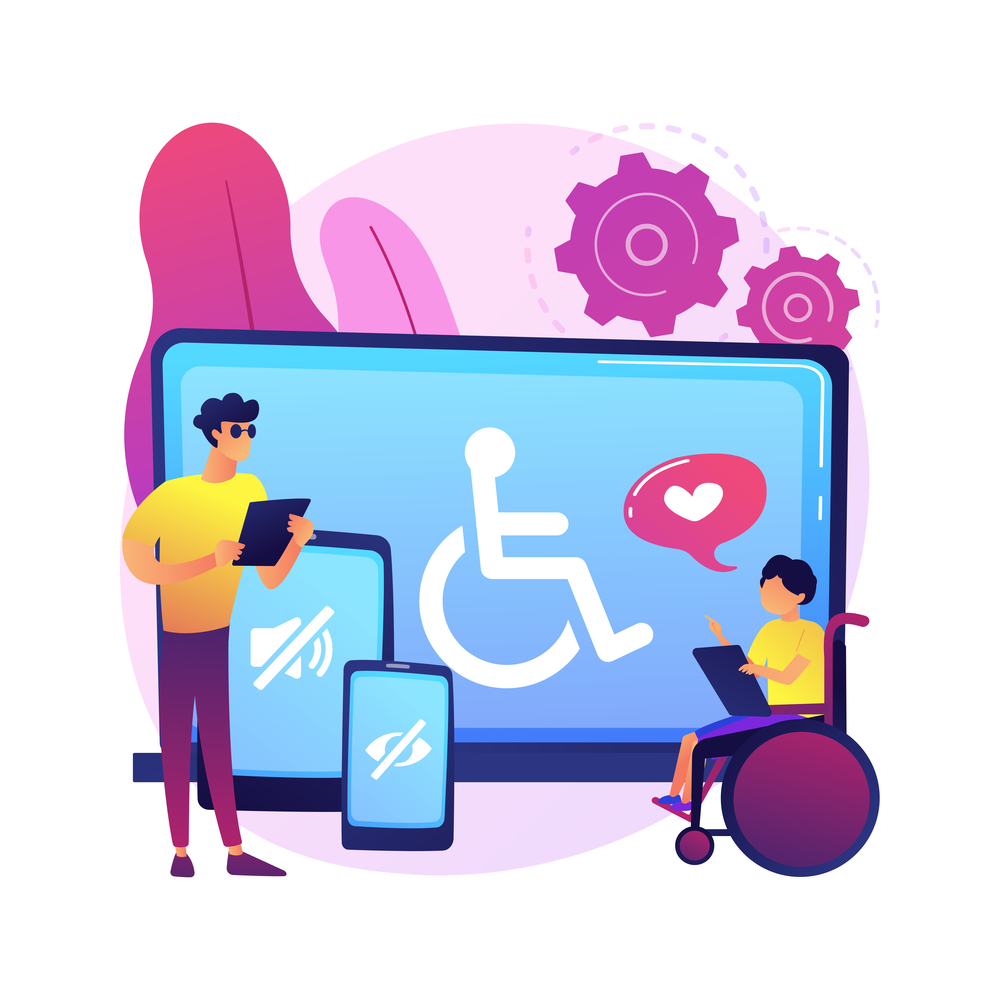Digital accessibility is no longer an option for companies; it’s a necessity. But inclusion starts with all of us, so here’s how teams can work with their executive bench to help ensure accessibility for all.
With the rapid acceleration to digital stemming from the shift to remote work during the pandemic, the need for robust digital accessibility support for people with disabilities became clearer across industries. While this shift to remote work has created a positive impact for many people, including some with disabilities, it has also heightened awareness around opportunities for more accessible options to serve a diverse audience. In a recent Adobe survey, we found that more than three-quarters of respondents living with a disability say their workplace has done a better job supporting them since the onset of the pandemic.
While this is positive news, we’re still seeing that parts of the internet remain inaccessible for many with disabilities.
It’s important for us all to look at how to make an impact and build accessible experiences to further improve productivity in fully remote and hybrid environments while supporting customers who are in those environments. We want to share some of our learnings over the years that help ensure companies are prioritizing digital accessibility and inclusion to meet the rapid pace of digital transformation.
Adapting to flexible work life and making sure that accessibility is top of mind is no longer an option: It’s a necessity. Teams must work with their executive bench to help ensure digital accessibility — instilling an inclusive culture is of critical importance for their company and employees.
Embracing digital accessibility

At the start of the pandemic, companies made concerted efforts to adjust to digital transformation as quickly as possible. Companies quickly learned that in-person work allowed for a certain level of support for employees to help compensate for systems and processes that weren’t fully accessible; when employees went remote the full impact of accessibility was even more prevalent.
Whether updating company-wide platforms to make video calls and collaboration easier to managing how teams communicate with each other, some teams adapted easily, while others may have struggled due to certain constraints — one of those being accessibility. Remote work also revealed when key services, often including access to general websites or workplace productivity tools, were not as accessible for employees with disabilities as they need to be.
Today, we’re seeing that the sites and services that provide accessibility features in their frameworks help people around the world, providing more access and opening up more opportunities in education and the workplace.
Tips for enhancing tools for inclusion
Whether you’ve already transformed your products or services to keep up with the pace of remote work needs, or are planning to in the future, there are several key things to keep in mind when enhancing tools for inclusion.
- Create an open dialogue and listen to employees and/or customers with disabilities. This can help ensure needs can be met or addressed, opening the door for more accessible and inclusive experiences.
- Have transparent conversations with executives to highlight how investments into accessibility in the workplace and into the company’s products and/or services can benefit both the business and users. Likewise, develop metrics to track progress in a transparent manner that ensures that knowledge of current status is widely understood.
- Educate and train design staff and engineers on how to plan for accessibility in websites and products. Ensuring that content is built and tested by engineers with an understanding of accessibility is critical to create accessibility engineering that positively impacts the end-user experience. Content and applications which are neither designed nor tested are certain to present barriers to end-users.
- Work to map your process and plans to industry accessibility standards and regulations, including WCAG 2.1, Section 508, the Americans with Disabilities Act and others.
- Conduct tests with end users with disabilities during and following development.
Partnering with executive allies
To help ensure that digital accessibility and inclusion efforts are being prioritized, accessibility teams should feel empowered to partner with executive allies to promote accessibility awareness within their company and its products. Such partnerships can help other influential leaders understand the scope of accessibility needs so that it is top-of-mind throughout the company.
At Adobe, we’re continuing to actively work to instill an inclusive culture that helps address the needs of every individual. We actively partner with our executives to help ensure we’re bringing more accessible and inclusive tools to our employees and users. Here are a few key strategies we use to move accessibility up on the list of priorities:
- Educate about the impact on users. People may choose not to prioritize accessibility when they don’t understand how others could be impacted, but when they’re aware of the impact they are more likely to look for opportunities to help.
- Connect customer demands and revenue. This can help make progress on accessibility needs. Gathering data on the impact on current revenue and potential market expansion helps product executives understand accessibility better.
- Make it easier to say yes. At Adobe, we build accessibility support into our design systems and UI component libraries to decrease the effort needed to implement accessibility. These efforts allow product teams to streamline their focus and make a bigger impact.
Inclusion powers the future of work

Using the past two years as a learning experience to better understand and hear from fellow colleagues and communities helps us better understand what tools can be used to empower more success in the workplace and in daily lives. I’ve shared a few initial steps to help get started but there is always more to be done.
As we continue to make strides to make the world more inclusive, we must collectively work together with our teams and executives to promote diversity, equity and inclusion. We can all do our part to help empower people with disabilities and make the future more diverse and accessible for everyone.
If you want to know more about disability inclusion in your company, read the Why & How’s here.
Source: Entrepreneur

